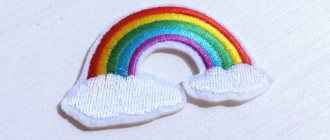Nina Minchenko
Master class “Garden cart made of cardboard”
When decorating a “Flower garden on the windowsill”
We chose Yozhenka as a fairy-tale character.
The house has already been made from the stump
.
A hedgehog lives on a hillock near a stump; He's busy all day, loosening the soil, watering it, taking care of the flowers. The gardener urgently needed to make a cart
I found a diagram of the trolley in Internet resources and here are the stages of work
1. Let's prepare: thick cardboard , board texture (A4)
– 2 sheets,
trolley ;
glue gun, glue pencil, ruler, stationery knife, scissors, 2 wheels from a typewriter 2. Transfer the pattern to cardboard ;
3. Using a ruler and a utility knife, cut out the diagram
4. We cover the sides of the cart
5. Glue the cart
6. Pre-pierce holes for the wheel axles
7. Glue inside and outside
8. Put the wheels in place
9. Prepare strips of cardboard (handles)
and a stand - a
trolley
10. Glue to the bottom
The cart for Yozhenka is ready.
The arrangement of our flower garden continues, but I’ll tell you about that next time.
Master class “New Year's ball made of cardboard” New Year's balls are one of the indispensable attributes of the New Year and Christmas. They can decorate not only the Christmas tree. They are easy and simple to make.
Children's master class “Heart made of threads and cardboard” Children's master class “Heart made of threads and cardboard” Greetings, dear colleagues and dear friends! The master class is intended.
Children's master class “Valentines from cardboard and napkins” Valentine's Day or Valentine's Day is a romantic holiday, celebrated in most countries of the world on February 14. Initially a celebration.
Master class on designing a “Tank” from cardboard and paper I bring to your attention a master class for February 23rd “Designing a “Tank” from cardboard and paper.” For work we will need materials:.
Master class “Christmas tree made of foil and cardboard” “Silver Christmas tree” The fashion for DIY New Year’s crafts continues. You can now see it on every store counter and office desk.
Master class “Christmas tree made of cardboard” Anyone can make such a Christmas tree. We suggest making a floor Christmas tree from the packaging. Equipment: box of household appliances.
Master class “Snowmen” made of cardboard The most wonderful time of the year has come - winter! A pleasant and magical holiday awaits us - New Year! What a New Year's holiday.
Master class “Snowman made of cardboard” Hello dear friends and colleagues. I bring to your attention the “Snowman” master class. We carry out preparations. Eight laps. Four circles.
Master class “Owl made of corrugated cardboard” Our group is called “Owl”. As soon as you enter the locker room, you are greeted by a picture painted on the ceiling tiles with her image.
Master class “Balalaika made of cardboard” Hello dear friends, colleagues and just guests of my page! On our favorite website, publications on the topic “Maslenitsa” are now very popular.
If you have a horse, then you probably use it as a means of transportation. Horses can transport not only people, but also large loads. For this, people make carts. Someone is thinking about how to make a cart themselves. If you take this issue seriously, then making a cart for a horse is quite possible.
In this article you will learn what types of carts there are and how to build them. We will pay special attention to the drawings.
How to make a simple horse cart with your own hands
To start making a cart, you need to think carefully about how to make all its elements. It is important to make the chassis of the vehicle correctly, since this is its main component. It includes:
- Front and rear axle,
- Frame,
- Wheels,
- Shock absorption struts.
The front axle must be made so that the cart can turn, and the rear axle must be stationary. If you are making an arc one-horse cart, then you need to pay special attention to making the shafts. For a steam-horse cart, the main element is the drawbar.
Providing the carriage with motor function
Since you want to make a carriage with your own hands with wheels, thanks to which it will move, you should take care of this. In principle, preparing such a device is not at all difficult.
- For the wheels themselves, take something round: a spool of thin tape, wire, a lid of the required size. You can even cut a circle out of cardboard. In future wheels, a hole is made in the center if it is not provided for in advance in the used items.
- A cocktail straw is attached to the bottom of the carriage with tape.
- A wooden skewer is inserted into it.
- The edges of the skewer are strengthened in the center of the wheels.
Required materials and their quantity
Before you start making a cart, you need to have the following materials and tools:
- Tools for welding work,
- Wooden boards,
- Pipes or metal profile,
- Welded frame and metal wheels,
- Hammer,
- Nails,
- Cart drawings,
- Tool for working with wood.
The amount of material will depend on the size of the cart, its purpose and type. Most often, the cart is made from wood. The width of the cart should be 1.5 meters and the length - 3 meters. The height of the cart is adjusted to the meter, but you need to take into account the size of the horse and the purpose of the cart.
Concept and types of carts
A cart is a cart that is harnessed to horses. A horse-drawn cart is an independent type of transport that can move on public roads in places permitted for this by traffic rules.
There are several types of horse carts:
- drogues;
- shelves;
- cart;
- carriage - decorative cart, cart.
A drog is a cart without a body. Shelf is an obsolete name for a flat-floored cart used to transport large loads. A cart is a small carriage with a seat and a sawhorse - a place for the driver, who steers the carriage using a horse whip and reins.
By definition, a cart is a wheeled carriage with a plank body, a vehicle to which a horse is harnessed. There are a great many types of carts. Let's consider only the most basic ones.
Plank bottom on wheels
Drawing with comments
To make a cart, you first need to make a drawing of the cart. It has this general appearance.
If you divide it into parts, then it consists of an axle, a frame and a hinged assembly. The cart axle looks like this.
Now we need to make the frame.
At the end, you need to make a mounted assembly.
This is what the step-by-step structure of the cart looks like. When making a drawing, you need to know the dimensions of the cart and figure out what shape it will be. If you have drawn the drawing correctly, then it will be easier for you to make the cart.
Providing the carriage with motor function
Since you want to make a carriage with your own hands with wheels, thanks to which it will move, you should take care of this. In principle, preparing such a device is not at all difficult.
- For the wheels themselves, take something round: a spool of thin tape, wire, a lid of the required size. You can even cut a circle out of cardboard. In future wheels, a hole is made in the center if it is not provided for in advance in the used items.
- A cocktail straw is attached to the bottom of the carriage with tape.
- A wooden skewer is inserted into it.
- The edges of the skewer are strengthened in the center of the wheels.
Manufacturing instructions, with secrets and nuances
You can make a horse cart from wood or iron, but we will talk about how to make a wooden cart. The work consists of three stages.
- Make an axle from timber. Some people find it difficult to make an axle out of wood on their own, so they hire specialists to do it. You can learn more about how to make an axle from the video.
- Make a frame. To do this, you need to take a beam and attach a beam to it, on one side, and a turning mechanism on the other. The rear axle must be attached to the frame frame. After this, assemble the turning mechanism. For strength, attach additional bars to the sides of the axle.
- We are making a hanging assembly. Attach the bottom of the cart to the frame frame. You need to attach two boards to the edges of the bottom. After cutting out the end of the cart, attach it to the frame. You need to attach two boards to each end. We hook the wheels and fasten the shafts.
So our cart is ready. It can be decorated with wood carvings. If you want, attach seats to it.
Technology for making a decorative wooden garden cart: instructions for craftsmen
The principle of constructing a homemade structure is not as complicated as it might seem at first glance. Its manufacturing technology consists of several successive stages:
- Selecting the type of cart and its overall dimensions.
- Creating a drawing of the future product and its individual elements.
- Manufacturing of cart elements, assembly.
- Installation and decoration.
Small decorative carts for placing flower pots
Selecting the type of cart and its overall dimensions
Before starting work on creating a drawing of a future decorative product, it is necessary to determine its design features and overall dimensions (the cart should not block the flowerbed or interfere with the passage).
Advice. For a small summer cottage, a small classic cart or a wooden three-wheeled wheelbarrow is ideal. Such products will not only not clutter up the area, but will also become its ideal and irreplaceable decoration.
Creating a drawing, examples
Creating a drawing is the next step. The success of further work directly depends on the correctness of its implementation. The craftsman needs to make a basic drawing of the product, as well as all its elements (wheels, body, axles). The drawings should contain not only schematic images of the future design, but also all the dimensions of its parts, according to which they will be manufactured.
Designing a decorative cart
After creating the drawing, you can begin designing the product. The first step is making the wheel; it is the most difficult and responsible, as it requires care and perseverance.
Wheel making:
- Prepare a template that will serve as the basis. To do this, draw a circle of a wheel of the required diameter on a sheet of plywood, divide it into eight equal parts, and connect it to each other (the resulting diagram will greatly facilitate the work of the master, as it will help to quickly cut out all the necessary blocks).
- Prepare a small block that will connect the knitting needles.
- From cuttings for hand tools that can be found on sale, knitting needles of the required length are cut (they must be adjusted to the desired size, which can also be determined using a prepared template).
- Carefully make holes in the blocks and the prepared block for installing the knitting needles.
- The wheel is assembled using special glue. All connecting places are generously lubricated with adhesive liquid, the knitting needles are inserted into the holes in the block, attached to the bars, which are then connected to each other.
- Sand the dry wheel and coat it with varnish.
The remaining two or three wheels are made using this principle.
Important. Homemade wheels can also be used to decorate rooms, buildings, structures and land. They serve as an original decoration that has a stylish appearance.
To make the body you will need:
- Prepare the boards that will be used in the body manufacturing process and wooden blocks for the frame.
- In accordance with the prepared drawing, a frame is assembled from bars, they are connected to each other with glue, nails, screws or other fasteners.
- The bottom and walls of the prepared frame are covered with boards and securely fixed.
- The finished body is sanded and varnished.
Treat the product with protective compounds
. Manufacturing of axles:
- Two cuttings from shovels (they are best suited for this purpose) are cut into axes of the required length.
- Holes are made in the wheel chocks for the axle handles, which will be inserted into them.
- Four additional chocks are prepared, which will be used to install the body (the part must have one beveled side).
- They are installed on wooden axles so that they become a reliable support for the body.
- New elements are sanded and varnished.
The decorative cart is assembled according to the principle of the designer:
- the finished wheels are fixed on axles made from cuttings (they are inserted into prepared grooves in the chocks);
- the wooden body is installed on the axle so that it rests clearly on special chocks (the joints are generously filled with glue or connected using nails, screws or any other available elements).
The finished decorative cart is installed in a pre-selected location. To decorate it, use pots with flowers of various sizes and shapes. They are placed in the body or placed near the product itself.
An original wooden cart is a worthy decoration for a summer cottage. Make and install such a product at home, and it will simply become an indispensable element of decor that will serve for many years.
The cart is not only a means of transportation
Some people think that carts are needed only to go to the forest and bring hay, but this is not so. The purpose of the cart can be different, for example:
- Freight,
- Passenger,
- Combat,
- Specialized.
That is, carts are used to transport mail, heavy objects or large cargo. Moreover, nomads can use a cart for temporary housing. Also, specialized carts are used for a mobile church, a mobile medical center and a field kitchen.
Cardboard carriage for Barbie
This toy will serve not only to create an external environment in the corner where Barbie “lives”. On a landau with an open top, the doll will be able to make real trips. And even invite your friends to ride. And Barbie’s owner’s friends will be jealous when they see what kind of carriage she now has!
You can make it with your own hands from an old cardboard box. Not only an adult, but also a teenager familiar with design can cope with this work. And since the carriage is made from cardboard, you will also have to cut out the parts with your own hands, using a shoe or stationery knife, scalpel or other sharp tool. Well, design talents are, of course, required when working on the appearance of the crew.
Cart in dream books
It happens that people dream of a cart. Dream books will interpret such a dream differently. For example, a modern dream book says that a cart symbolizes changes in life. If the cart is behind you, it means you can handle them successfully, but if you are not sitting on the cart stable, it means they will break you.
In fact, if a person believes the dream book, it means that he is programming himself to what the dream book says and does not try to build his life himself, but adapts it to different books. Dream books were created by people, so you don’t need to believe everything they say.
Pot cart made from popsicle sticks
It is difficult to meet a person in our world who does not like ice cream. Children especially love this cool delicacy. Usually, after eating this delicious treat, we throw away the ice cream stick. But I think few people imagine how many fun and interesting crafts can be made using ice cream sticks.
Today I would like to present to your attention a master class on creating a pot-cart from popsicle sticks.
To work you will need:
- 20 popsicle sticks,
- 1-2 thin skewers or toothpicks,
- 3 wooden kebab sticks,
- 2 pieces of three-core cable, approximately 10 cm each,
- file knife with a sharp tip,
- hot glue gun.
Step 1: Assembling the cart.
Using a saw blade, cut into bars from thick kebab sticks, approximately as in the photo.
First we assemble the frame from the blocks...
The length is equal to the length of the ice cream stick, and the width is as you wish.
We saw off the sticks to fit the width of the cart: 3 for the front side and 4 for the rear.
4 whole sticks on the sides and 5 sticks on the bottom of the cart. We fix everything with hot glue.
Step 2: Wheels.
We need to pull out the middle wire from the pieces of three-core cable.
Coat the remaining wire tails with hot glue and connect the cable into a ring.
And second...
We need to cut the skewer or toothpicks to such a length that there is a hole in the middle of our wheel, the diameter of a thick kebab stick.
Using a sharp knife or awl, in place of the elongated middle wire, we make symmetrical holes into which we insert the “spokes” of our wheel.
Like this…
And we fix it with hot glue, on a block prepared in advance, first one wheel...
And then the second...
You can, of course, leave it like that, securing the wheels with hot glue... The cart turns out to be quite neat.
You can simply paint it with acrylic paint. Naturally, we paint first and then attach the wheels.
I really wanted to give the cart an unusual texture using single-phase craquelure varnish.
Craquelure is an artificial creation of the “antique” effect - the effect of a cracked surface over the years.
Beautiful craquelure can be created using contrasting acrylic paints: light and dark, pale and rich.
The cracking of the surface depends on how you applied the second coat of paint. When using a brush, the cracks will be directed according to the movement of the brush. To obtain a mesh, paint is applied with a sponge or very small strokes.
At home, without specialized varnish, you can use PVA glue, furniture varnish, raw egg white, gelatin, vinegar or washing gel.
The craquelure technique is very specific and an untrained person may not be able to cope with it right away, so it is advisable to try your hand at a separate piece of wood.
Personally, as an experiment, I tried two methods: table vinegar and PVA glue. I wouldn’t say the effect was very pleasing, 2-3 points out of 5, compared to craquelure varnish. If you don’t want to spend 120-150 rubles on a 50 ml jar of varnish, then why not try it. Of course, it is better to experiment on a small surface and not on the finished work.
I’ll tell you how I did it...
Craquelure using PVA glue:
We cover the surface with paint of a contrasting bright color. We are waiting for the paint to dry completely. Then, sparingly, we apply PVA glue on it. We wait for the glue to set a little and apply light-colored acrylic paint in a thick layer. Immediately start drying your hair with a hair dryer.
It turns out quite a lot of cracks. We will get a natural crack, but such cracks will be thin and barely noticeable.
Craquelure with 9% vinegar:
The rapid appearance of “wrinkles” can be achieved by applying 9% vinegar to a layer of acrylic paint.
We paint the surface with acrylic paint and carefully apply 9% vinegar to the surface with a small sponge. The paint begins to spread like craquelure.
Moreover, the cracks can be very wide, this is convenient when you want the second layer of paint (contrasting) to be clearly visible.
To be honest, I didn’t really like the look of the cracks.
There are several other methods, but I only read about them. If anyone wants to share their experience, be sure to write in the comments.
There are several more elements with which you can “age” the surface.
Craquelure using liquid washing gel.
Apply base color and let dry. Apply the gel with a brush. The thicker the gel, the better. Therefore, it is better to use concentrated. Apply heavily diluted paint on top with a brush or sponge.
Craquelure using egg white.
Apply one or two coats of latex acrylic paint and let it dry thoroughly. Then the egg white is applied with a brush in thick strokes, not paying attention to whether one stroke overlaps the other or not. We are waiting for the surface to dry completely (naturally). Apply paint of a different color, so that one stroke does not overlap the other.
Craquelure using gelatin: 1 tbsp. a spoonful of gelatin in a glass of cold water.
Apply gelatin, which is beginning to harden, onto the dried PVA with a brush. But not completely frozen yet, so that there are no lumps. Dry for 10-15 minutes depending on the thickness of the layer. If using a hairdryer, then 3-5 minutes. Apply paint to slightly dried gelatin. When it starts to dry out, it fades. If the gelatin is completely dry, there will be no cracks. You can apply gelatin again without washing off the previous one.
You can apply paint over gelatin in any direction. Then be sure to apply several layers of varnish.
After all the experiments, I gave my preference to a specialized craquelure varnish.











